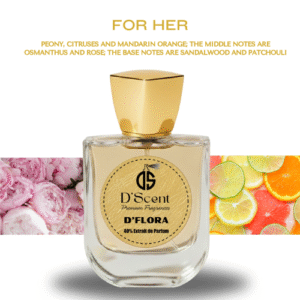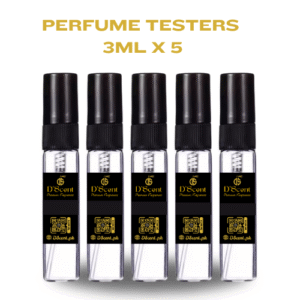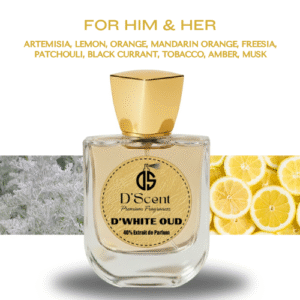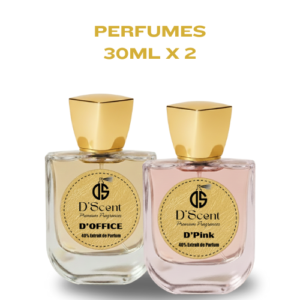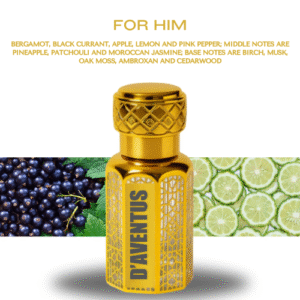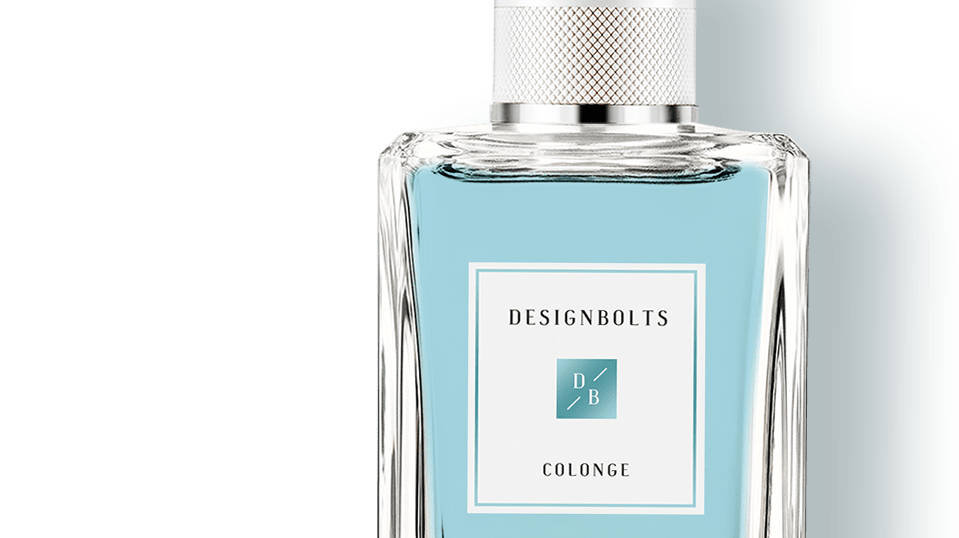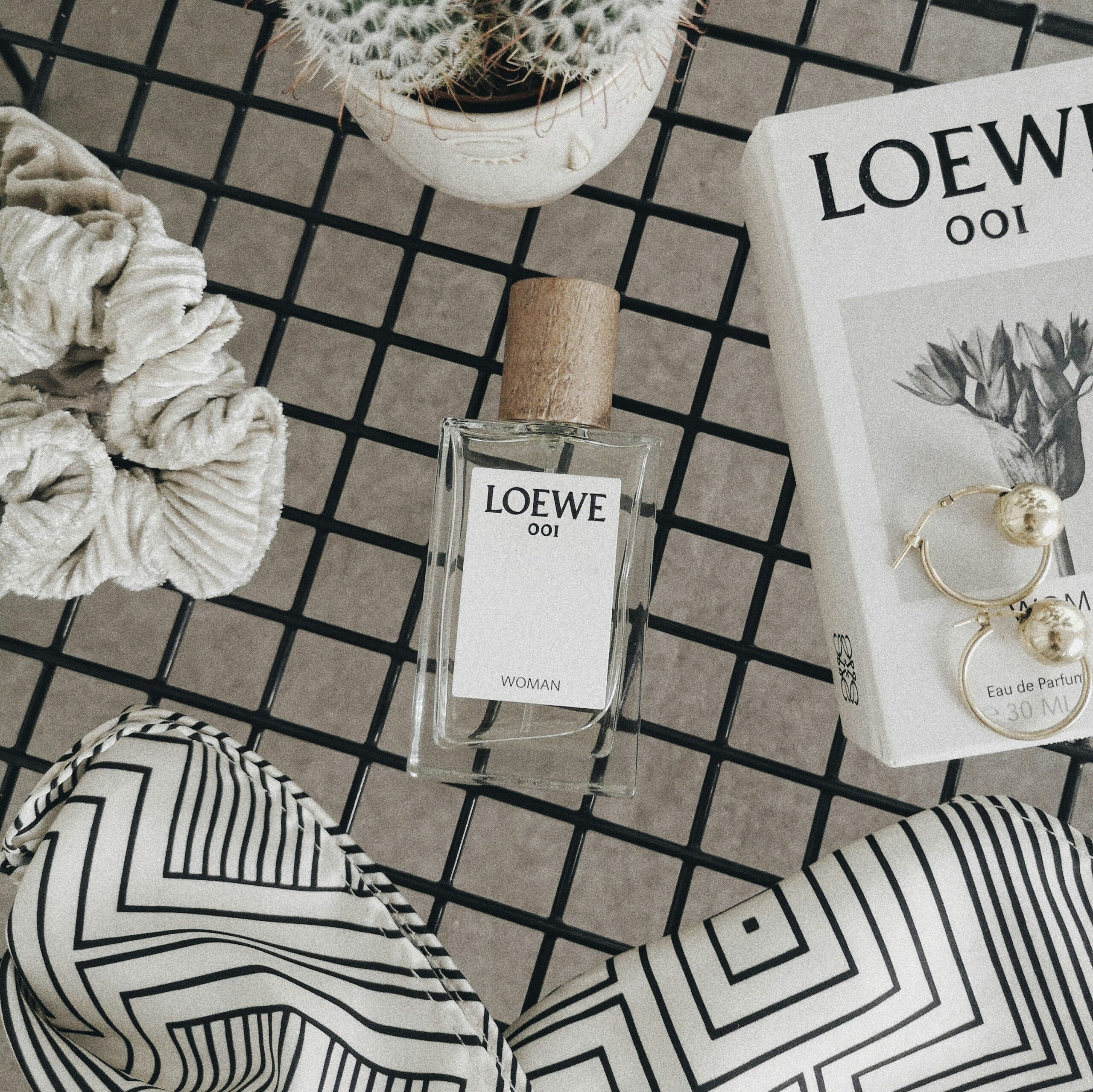Introduction to Seasonal Fragrance Choices
Choosing the right fragrance for the season can significantly enhance your overall experience and how you are perceived by others. Just as our clothing choices shift with the changing seasons, so too should our selection of perfumes. Different times of the year are characterized by varying temperature and humidity levels, impacting how scents are experienced and enjoyed. Therefore, understanding the relationship between these environmental factors and fragrance composition is crucial.
In warmer months, such as spring and summer, fragrances with lighter, more refreshing notes tend to be favored. Citrus, floral, and aquatic scents are popular choices as they evoke feelings of freshness and vitality. The heat tends to amplify these lighter notes, creating a more vibrant scent experience. On the other hand, during the cooler months of fall and winter, richer and more intense fragrances come to the forefront. Warm, spicy notes such as amber, sandalwood, and vanilla resonate well with the season, providing a sense of comfort and warmth as outdoor temperatures drop.
Additionally, lifestyle changes associated with different seasons play a significant role in fragrance choices. The active and social nature of summer often inspires individuals to opt for more energizing and uplifting perfumes. Conversely, the introspective and cozy ambiance of winter may urge people to seek out deeper, more sentimental scents that evoke nostalgia and intimacy.
Understanding these dynamics is essential for developing a personalized fragrance wardrobe that aligns with the seasons. By considering temperature, humidity, and lifestyle, one can make informed choices that enhance their sensory experience throughout the year. This guide will explore tailored fragrance options that can elevate your presence season by season.
Spring Fragrances: Fresh and Floral
As winter fades and spring blossoms into life, the choice of fragrance can significantly impact our experience of the season. Spring fragrances are characterized by their fresh and floral notes that evoke feelings of renewal and growth, making them particularly appealing during this vibrant time of year. These scents often encapsulate the essence of blossoming flowers, new beginnings, and the invigorating warmth of the sun. Selecting the right spring perfume not only enhances the sensory experience but can also uplift one’s mood, reflecting the rejuvenation happening in nature.
Lightness is a crucial attribute of spring perfumes. Scents with citrusy top notes such as bergamot, lemon, or grapefruit are your allies in complementing the refreshing aura of spring. These notes are often paired with heart notes that include delicate florals like peony, cherry blossom, or jasmine. The result is a fragrance that is not overwhelming but rather lends itself to a subtle elegance. In this regard, one could consider brands such as Marc Jacobs with its Daisy Eau de Toilette, which perfectly balances fruity freshness with a soft floral heart, capturing the spirit of a spring day.
Another noteworthy recommendation is Chanel Chance Eau Tendre, which features grapefruit and quince at its opening, easing into a heart of jasmine and honeysuckle, while maintaining a light, airy feel throughout. This fragrance exemplifies how spring perfumes can incorporate floral aromas without losing their refreshing quality. To truly embody the changing weather, look for perfumes that use natural ingredients to bring out the lushness of spring’s bounty. Overall, the ideal spring fragrance should serve as a reflection of nature’s awakening, boasting a harmonious blend of invigorating freshness and floral elegance, encapsulating what it feels like to step into this delightful season.
Summer Scents: Light and Refreshing
As the temperature rises and the days become longer, summer calls for fragrances that embody freshness and vitality. During this season, lighter scents are preferred, often characterized by vibrant notes that evoke a sense of warmth and rejuvenation. Citrus, tropical fruits, and aquatic elements are the hallmarks of summer perfumes, making them perfect companions for sunny outings and beach days.
Citrus notes such as bergamot, lemon, and lime deliver an invigorating burst of freshness, essential for combating the heat. These fruity scents tend to uplift one’s mood and create an atmosphere of energy. Perfumes featuring mandarin orange or grapefruit are particularly popular, merging zestiness with a hint of sweetness. For instance, a fragrance like Acqua di Parma’s Blu Mediterraneo offers a refreshing citrus profile that encapsulates the essence of summer.
Tropical fruits such as mango, pineapple, and coconut contribute delightful sweetness and exotic flair to summer fragrances. These aromas not only transport wearers to far-off beach locales but also resonate with the carefree nature of summer. A classic example is Dolce & Gabbana’s Light Blue, which artfully blends Sicilian lemon and apple with a tropical hint of jasmine, creating a scent that is as refreshing as a breezy summer evening.
Aquatic elements further enhance the lightness of summer scents, evoking the feeling of cool ocean breezes and splashing waves. Fragrances infused with marine notes provide a clean and crisp aroma, often embodying the serenity of a day by the shore. For instance, Issey Miyake’s L’eau d’Issey captures this essence beautifully with its blend of water lily, rose, and marine accords, resulting in a fragrance that epitomizes summer freshness.
In conclusion, selecting the perfect summer scent involves a focus on light and refreshing notes such as citrus, tropical fruits, and aquatic elements. These fragrances not only brighten one’s mood but also create a lasting impression during the vibrant summer months. By choosing the right perfume, individuals can enhance their seasonal experiences and fully embrace the spirit of summer.
Autumn Fragrances: Warm and Spicy
As the leaves turn golden and the air turns crisper, autumn invites us to embrace fragrances that resonate with the season’s warmth and comfort. Perfumes that feature warm, spicy, and earthy notes are particularly effective in capturing the essence of fall. The allure of scents like cinnamon, vanilla, and amber not only evokes nostalgia but also enhances the cozy atmosphere characteristic of this time of year.
Cinnamon is a quintessential ingredient often associated with autumn fragrances. Its warm and sweet profile instantly recalls images of freshly baked goods, thereby creating a sense of homeliness. Many perfumes feature cinnamon as a prominent note, offering a spicy aroma that perfectly aligns with the season. These fragrances are ideal for wearing during casual gatherings or evening outings, where the warmth of the scent can be both inviting and comforting.
Another popular ingredient in autumn perfumes is vanilla. Known for its creamy richness, vanilla adds depth and smoothness to fragrances, making them feel more indulgent. Perfumes that ingeniously blend vanilla with other autumn notes create a balanced harmony that captures the essence of the season. This is especially suitable for numerous occasions, from daytime wear to elegant evening events, as it effortlessly complements the transitional environment.
Lastly, amber, with its resinous profile, provides a warm base that grounds autumn fragrances. Often associated with sensuality and warmth, amber serves to enhance the overall richness of a perfume. When combined with other seasonal elements, such as nutmeg or sandalwood, it creates a beautifully layered scent that resonates with the heart of autumn. The choice of a warm, spicy perfume can enhance not just personal style but also reflect the beauty of the changing season.
Winter Scents: Rich and Comforting
As the temperatures drop and winter approaches, the choice of perfume often shifts to more enveloping and comforting fragrances. Rich and deep scents serve to not only complement the seasonal atmosphere but also provide an added layer of warmth during chilly months. Winter perfumes typically emphasize woody, gourmand, and musk notes, creating an olfactory experience that is both inviting and intimate.
Woody scents, such as sandalwood, cedar, and vetiver, evoke the essence of forested landscapes blanketed in snow. These fragrances possess a grounding quality, reminiscent of warmth and stability. A prominent example is Tom Ford’s “Santal Blush,” which combines creamy sandalwood with a hint of spice, making it a perfect companion for cold winter nights. The earthy undertones of woody notes create an aura of coziness, inviting one to wrap themselves in layers and sip on warm beverages.
Gourmand fragrances embody the spirit of winter with their deliciously indulgent profiles, often inspired by bakery delights and sweet treats. Scents featuring notes of vanilla, cocoa, and caramel can evoke nostalgic memories of holiday celebrations. For instance, Yves Saint Laurent’s “Black Opium” intertwines coffee with sweet vanilla, crafting a fragrance that feels like a warm hug amidst the frost. These indulgent compositions not only uplift the spirits but also resonate with the comfort associated with seasonal festivities.
Musk notes further enhance winter perfumes, imparting a sense of intimacy and warmth. The subtle earthiness of musk tends to provide a velvety finish to any fragrance, allowing it to linger beautifully on the skin. Fragrances like Narciso Rodriguez’s “Narciso” highlight this blend, merging floral elements with deep musky accords for a rich scent profile. Such perfumes create a lasting impression, fostering connectivity and closeness during winter gatherings.
In essence, the right winter scent can transform any chilly day into a cozy experience. By embracing woody, gourmand, and musk notes, one can find the ideal fragrance to enhance the warmth and comfort that characterize this season.
Choosing Perfumes for Transition Seasons
Transition seasons, such as the shift from winter to spring or summer to autumn, present unique challenges and opportunities for fragrance selection. During these periods, the weather can fluctuate significantly, influencing not only physical comfort but also emotional and psychological states. Thus, it becomes essential to choose perfumes that can adapt to these varying conditions, striking a balance between freshness and warmth.
When selecting perfumes for transition seasons, versatility is key. Fragrances with layered notes, which evolve over time, are particularly suitable as they can complement different temperatures and moods. For example, a fragrance that opens with bright citrus notes can invigorate the senses during warmer sunny days but transitions to deeper undertones, such as woody or spicy elements, as the temperatures drop in the evening. Such complexity ensures that the fragrance remains engaging, regardless of the environment.
Additionally, consider opting for perfumes that contain aromatic herbs and floral notes. These ingredients often embody a sense of renewal and rejuvenation, symbolizing the change in seasons. Scents that feature lavender, rosemary, or jasmine can refresh and invigorate during the warmer parts of the day, while still maintaining a comforting warmth as the temperature shifts. This adaptability allows one to wear the same fragrance throughout the day without feeling out of sync with the ever-changing weather.
Incorporating a lighter touch of musk or amber can also provide a comforting layer to a fragrance, making it appropriate for cooler evenings. Ultimately, the goal is to select a perfume that resonates with both your personal style and the transitional energy of the seasons. By thoughtfully choosing fragrances with dynamic qualities, one can effortlessly navigate the complexities of seasonal change.
Layering Scents for Seasonal Impact
Layering fragrances has emerged as an art form, empowering individuals to create customizable scent profiles that reflect their personal style and the changing seasons. By combining different perfumes or complementing them with scented body products, one can achieve a unique, multifaceted fragrance experience that transcends the typical seasonal offerings. This technique allows enthusiasts to adapt their scent choices to various atmospheres, occasions, and moods throughout the year.
The foundation of effective scent layering begins with selecting a primary fragrance that resonates with the season. For spring, consider floral or fresh scents that capture the essence of blooming nature, such as jasmine or peony. In summer, fruity fragrances with notes of citrus or coconut can evoke warm, sunny days. As autumn approaches, woodsy, earthy scents featuring cedarwood or sandalwood can enhance a sense of coziness, while winter fragrances often benefit from deeper notes such as amber or vanilla to convey warmth and subtlety.
Once a primary scent is chosen, the next step involves incorporating complementary body products. Scented lotion, shower gels, or deodorants can enhance the overall fragrance experience while ensuring a longer-lasting scent. For instance, layering a vanilla-scented lotion under a floral fragrance can create a harmonious blend that highlights both notes delicately. Furthermore, incorporating different layers can lead to a more pronounced fragrance that is perceptible in various environments without overwhelming the senses.
The key to successful scent layering lies in balance. It is crucial to ensure that the chosen fragrances work harmoniously together rather than compete for dominance. Experimentation is encouraged; try mixing a few drops of essential oils into unscented lotions or applying the second fragrance on pulse points, which can help them radiate beautifully throughout the day. By mastering the art of layering, individuals can enjoy a unique olfactory expression tailored to every seasonal change.
How to Properly Apply Perfumes for Seasonal Wear
Applying perfume effectively is essential for enhancing the fragrance experience, particularly when considering seasonal variations. Understanding how and when to apply your favorite scents can significantly impact their longevity and suitability for different weather conditions.
To start, timing plays a crucial role in the application process. It is recommended to apply perfume right after showering or bathing when your skin is clean and slightly damp. This practice allows the perfume’s notes to meld with your skin’s natural moisture, enhancing fragrance retention. Additionally, in warmer months, lighter scents such as citrus or floral perfumes are ideal, while warmer fragrances like amber or vanilla can be more suitable for the colder months.
The application areas are equally important. Common pulse points such as the wrists, neck, and behind the ears are effective hotspots to apply perfume. These areas generate warmth, which helps to diffuse the fragrance, allowing it to radiate gently throughout the day. For particularly hot climates, consider applying perfume at the base of the throat or on the elbows rather than directly on the wrists, as this can help control the intensity of the scent.
Moreover, skin type should not be overlooked when applying perfumes. Oily skin tends to hold scents longer compared to dry skin due to the natural oils acting as a base. For those with dry skin, it may be beneficial to apply a fragrance-free moisturizer before applying perfume. This technique assists in anchoring the scent and ensuring it lasts longer throughout the day.
In conclusion, proper application of perfumes according to seasonal needs can greatly enhance your fragrance experience. By following these best practices, one can ensure scents are effective and enjoyable, tailored to both personal preference and environmental conditions.
Conclusion: Embracing the Best Scents Year-Round
As we have explored throughout this guide, selecting the right fragrance for each season can significantly enhance one’s overall experience and mood. Perfumes are not merely accessories; they possess the power to evoke emotions, create lasting memories, and even influence perceptions. The transition from a warm, floral essence in spring and summer to cozy, deeper notes in fall and winter demonstrates how scents can reflect and complement our changing environments.
Embracing the journey of discovering seasonal scents is an adventure in itself. Each season offers a unique palette of fragrance notes that harmonize with the atmosphere around us. The crisp air of autumn calls for warm vanilla and earthy accords, while the vibrant energy of summer invites fresh citrus or aquatic elements. Experimenting with fragrances encourages one to step outside their comfort zone, leading to new olfactory discoveries that resonate personally.
The significance of choosing the right perfume extends beyond mere aesthetics; it is a means of self-expression. A carefully selected scent can amplify confidence, enhance personal style, and create a signature presence that lingers in the memories of others. As one navigates through the diverse world of fragrances, it is vital to remain open to experimentation. The ideal fragrance is often found when we least expect it, turning a simple gesture of applying perfume into an empowering ritual that marks our daily lives.
Ultimately, finding the best perfumes for every season enriches our experiences, making moments more memorable and meaningful. As we journey through different times of the year, let us remember to embrace the scents that resonate with us, allowing them to accompany and elevate our seasonal experiences.


